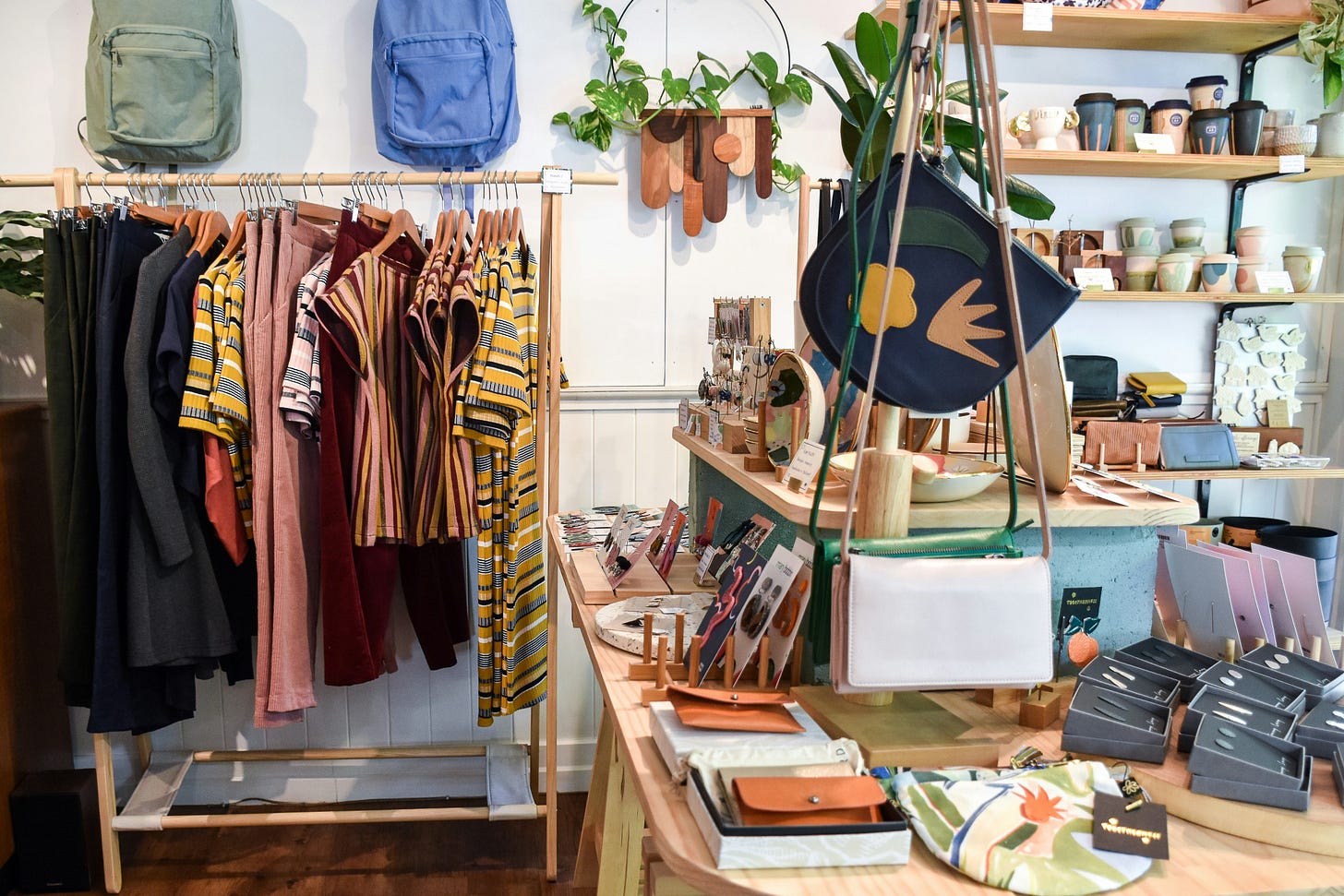"Well someone must be making money doing this."
The false assumption that because a small business is still there, it must be economically viable
I cannot tell you how many times in recent months someone has said to me, “Well someone must be making money doing this…” when I say I’m coming to the conclusion that storefront businesses are uniquely economically threatened.
This assumption usually ends with something like:
“…or insert-name-here business wouldn’t still be there!”
“…or every storefront would be empty!”
In 2022, you probably witnessed a lot of businesses closing in your community and on Instagram. In 2023, almost a three full years after the crisis, you might assume that if a business is still open, it “survived COVID,” yet shops are still closing in its wake. The shops that closed in 2024 were not okay in 2023, but you didn’t know that, because they seemed fine on the surface. They were still open.

Just because a shop is open doesn’t mean it’s thriving. Let’s take my business for example.
People might assume that Fernseed is doing well because we’re still here. On the one hand, yes, we’re not closing, but that’s not because we’re doing well financially.
Fernseed isn’t closing right now because:
The business currently owes me/my family $230,000 and creditors $130,000 for a total of $360,000 in debt, which equates to about 69% of our annual revenues
Because of my partner’s income, I can forgo a salary until the business reaches better sales and profitability metrics, ideally paying the debt back first
If macro economic factors improve and revenues return to 2023 numbers, Fernseed’s profit can begin to repay the debt
Most of our creditor debt, including the SBA EIDL loan, required a personal guarantee, so even in the case of filing business bankruptcy, I would still likely owe the money
It feels to me like the business is the most logical way to repay the debt versus me shutting down the business, liquidating everything for less than I paid for it, and getting a full time job to make payments on the rest of it, but that is an option
When we know that a recent Main Street survey found that 21 percent of Main Street businesses in 2024 reported operating at a loss, then we know that almost a quarter of all Main Street businesses are losing money this year, and that’s up from 15 percent as reported in the same survey last year. Of course that means a majority of businesses were operating at a profit, at least as surveyed, but does profit equal “success”?
How do we define storefront business success?
We cannot continue to define it as “not going out of business.” We probably shouldn’t define it as narrowly as profit, because while profit is certainly a big factor in determining the health of a small business, it is but one metric in a list.
Here are some criteria I suggest thinking about when measuring the health of small storefront businesses:
The shareholders and employees are able to pay themselves what would be considered a living wage in their community
Ideally for shareholders, they are able to pay themselves enough to live as head of household in their community
The business carries less than 10% of its annual revenue in short and/or long-term debt
The shareholders and employees report a good quality of life and are hopeful
The current business value is equal to or greater than the value the shareholders might set aside for retirement working at a W-2 job during the same time period
The business makes enough profit to develop a cash buffer that grows annually, so as the business grows it relies less and less on credit for cash flow and more on its own reserves to weather downturns, meaning the shareholders are less likely to be trapped into emergency debt that requires a personal guarantee
The business has longevity, which may be defined differently than it was in the 1970s, but is probably longer than 4 years
I’m really just throwing these metrics out there, but as you can see, I’m focused more on quality of life and earning potential for the shareholders and employees than I am on purely financial metrics.
If you own a storefront business, are there success metrics you would suggest adding here? Please add them in the comments!
I went to the Main Street conference this month thinking someone would be looking more closely than I am at these factors and I discovered that at least in Washington state, I don’t think they are. I don’t think they’re studying it because I don’t think they see it happening, because some businesses are still in storefronts and not everything is vacant.
Even if our storefronts don’t stay vacant because new hopeful business owners will always come along to fill them, the constant turnover impacts placemaking and the short-lived attempt can financially devastate hopeful business owners in our community. Even if a handful do make it, why aren’t we asking if that number is shrinking compared with the handful that made it last year, or pre-COVID, or in the 1970s?
We can’t go on assuming that because a handful of businesses have made it work that we don’t have a problem. I’m pretty sure we have a problem here, and I’m just trying to figure out if anyone else is paying attention or studying it.



